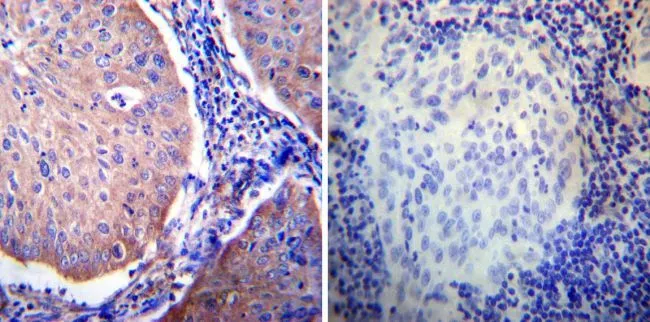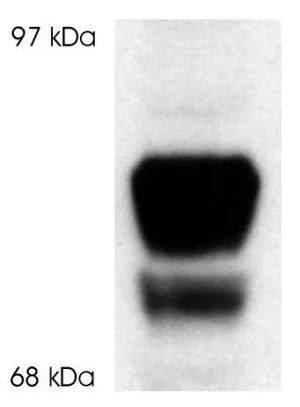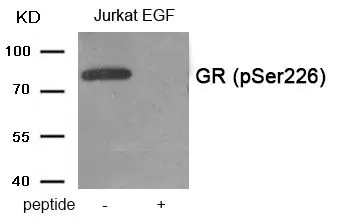Glucocorticoid Receptor antibody [HMV304] HistoMAX(tm)
GTX639927
ApplicationsImmunoHistoChemistry, ImmunoHistoChemistry Paraffin
Product group Antibodies
TargetNR3C1
Overview
- SupplierGeneTex
- Product NameGlucocorticoid Receptor antibody [HMV304] HistoMAX(tm)
- Delivery Days Customer7
- Application Supplier NoteIHC-P: 1:100-1:200. *Optimal dilutions/concentrations should be determined by the researcher.Not tested in other applications.
- ApplicationsImmunoHistoChemistry, ImmunoHistoChemistry Paraffin
- CertificationResearch Use Only
- ClonalityMonoclonal
- Clone IDHMV304
- Concentration56 ug/ml
- ConjugateUnconjugated
- Gene ID2908
- Target nameNR3C1
- Target descriptionnuclear receptor subfamily 3 group C member 1
- Target synonymsGCCR, GCR, GCRST, GR, GRL, glucocorticoid receptor, nuclear receptor subfamily 3 group C member 1 variant hGR-B(54), nuclear receptor subfamily 3 group C member 1 variant hGR-B(77), nuclear receptor subfamily 3 group C member 1 variant hGR-B(93), nuclear receptor subfamily 3, group C, member 1 (glucocorticoid receptor)
- HostRabbit
- IsotypeIgG
- Protein IDP04150
- Protein NameGlucocorticoid receptor
- Scientific DescriptionThis gene encodes glucocorticoid receptor, which can function both as a transcription factor that binds to glucocorticoid response elements in the promoters of glucocorticoid responsive genes to activate their transcription, and as a regulator of other transcription factors. This receptor is typically found in the cytoplasm, but upon ligand binding, is transported into the nucleus. It is involved in inflammatory responses, cellular proliferation, and differentiation in target tissues. Mutations in this gene are associated with generalized glucocorticoid resistance. Alternative splicing of this gene results in transcript variants encoding either the same or different isoforms. Additional isoforms resulting from the use of alternate in-frame translation initiation sites have also been described, and shown to be functional, displaying diverse cytoplasm-to-nucleus trafficking patterns and distinct transcriptional activities (PMID:15866175). [provided by RefSeq, Feb 2011]
- Storage Instruction-20°C or -80°C,2°C to 8°C
- UNSPSC12352203






![ELISA analysis of antigen using GTX60389 Glucocorticoid Receptor antibody [6E6]. Red : Control antigen 100ng Purple : Antigen 10ng Green : Antigen 50ng Blue : Antigen 100ng](https://www.genetex.com/upload/website/prouct_img/normal/GTX60389/GTX60389_20170912_ELISA_w_23061123_618.webp)